What is the difference between mint and lemon balm?
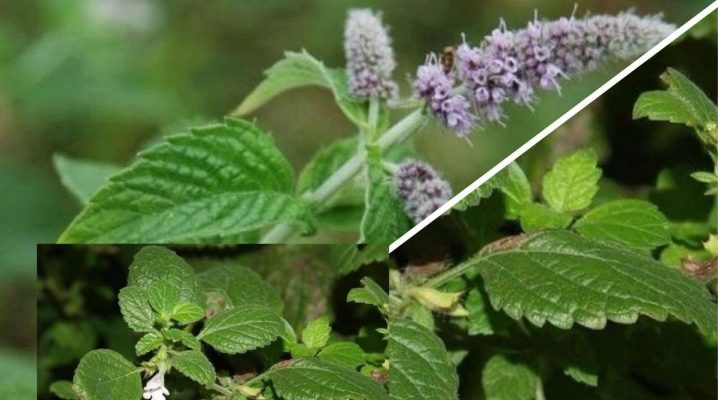
Due to the significant benefits for the body since ancient times, people have used herbs to improve their health and as an aromatic addition to tea and other drinks. Mint and lemon balm have not yet lost their relevance and benefits. To use each of these herbs correctly, you need to know who benefits from them and who does not, when and how they should be used, how and how they differ. These herbs can be grown independently, the main thing is to know the features of this process.
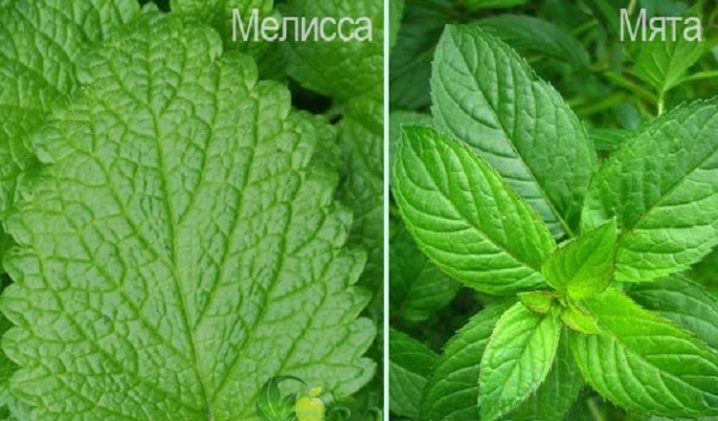
Differences in appearance
Mint and lemon balm are spicy herbs that look pretty similar at first glance. Many people mistakenly think that these two names are varieties of the same plant.
The similarity of these cultures is only in the fact that they belong to the family of lamines.
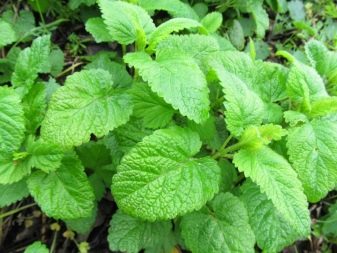
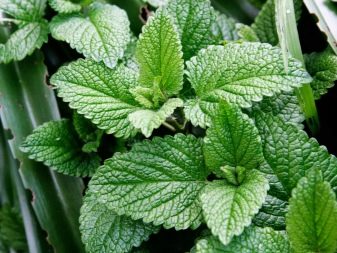
If you carefully study and compare mint and lemon balm, you can see a significant number of differences between them. In appearance, these herbs can be distinguished by such indicators.
-
By stem and height. In mint, the stem is erect, and in lemon balm, it is branched, with several shoots. Mint bushes are usually about 50 cm tall, but sometimes they can grow up to a meter. Melissa grows up to 1.5 m in height.
-
By colors. The inflorescence of mint resembles a spikelet, the flowers are distinguished by a purple hue. When flowering, lemon balm forms false rings from 6 to 12 pieces. The color of the flowers can be different: white, blue, purple.
-
On the leaves. Mint leaves are dark in color, smooth to the touch, with a sharp end. Melissa has rounded, light green leaves that are soft to the touch.
-
By fruit. Mint has practically no fruit, and every year lemon balm throws out small boxes in which its seeds are located.
-
By aroma. Mint has a pungent and strong menthol odor. Melissa has a softer, sweetish flavor and lemon aroma.
-
Taste. Mint has a bright menthol flavor, lemon balm tastes more like lemon.
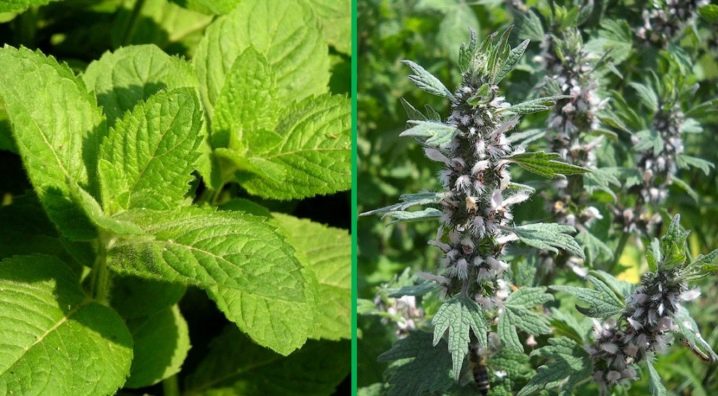
Mint likes to grow in sunny, well-hydrated areas, and thrives best on clay or sandy soil. Melissa prefers shady terrain, ravines and lowlands, grows best on sandy soil, does not like moisture, feels good in dry soil.
According to these characteristics, it is easy to distinguish these plants and not to confuse them in the future. The main differences make it possible to navigate what kind of culture is in front of your eyes.
After looking at several photos and comparing the description, you can understand what each of the cultures looks like.
In addition to growing in the garden and outdoors, it is possible to grow mint in a pot like a flower. Room mint, in addition to a pleasant aroma, will also give aesthetic pleasure.
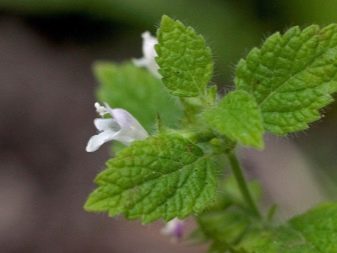

How do contraindications differ?
Mint and lemon balm are medicinal herbs, they have a set of beneficial properties that have a certain effect on the body. Each of the herbs has its own area of influence. Before using a decoction or infusion of any of these herbs, you need to make sure that it will be safe and beneficial.
Using mint and lemon balm without control can lead to unwanted results.
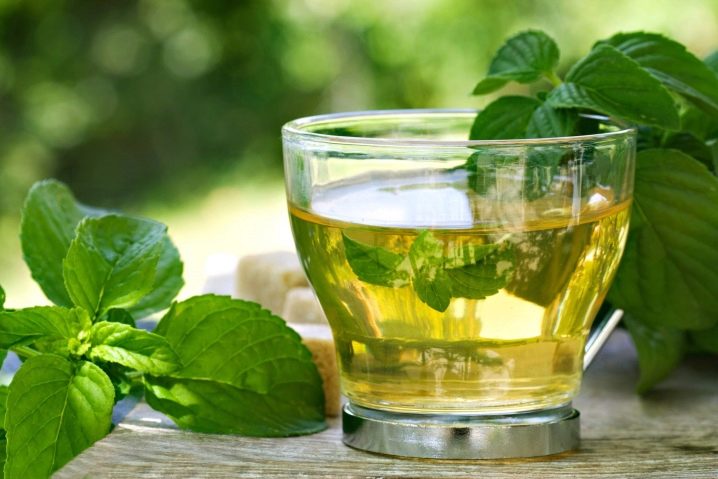
Contraindications to the use of mint include:
-
the presence of varicose veins and hypertension;
-
problems with conception;
-
the presence or tendency to manifestations of allergies;
-
period of pregnancy and lactation;
-
infancy and young age of children;
-
the presence of problems with potency.

If you use mint too often or in large quantities, then allergic reactions may appear in the form of redness on the skin, itching, rash. Some people may have difficulty breathing or have severe headaches.
Melissa should not be drunk in such cases:
-
under reduced pressure;
-
younger age in children;
-
work related to concentration of attention;
-
young guys (lemon balm reduces potency).

If you use lemon balm uncontrollably, then a rash may appear, the reaction and consciousness will be inhibited, the person will feel lethargic and drowsy.
Mint has a stronger effect on the body, and the negative consequences from it are stronger, therefore, choosing between these two herbs, it is better to stay on lemon balm.
In order not to harm yourself or people from your environment, you should consult with a specialist before using any of these herbs.

Application difference
The use of similar herbs such as mint and lemon balm varies greatly. Mint is often used in confectionery, creating all kinds of desserts and sweets, as well as syrups. Melissa is used in the process of pickling vegetables, meat and fish. It is practically not used for making sweets.
In addition to cooking, mint with lemon balm is also used in cosmetology. Melissa is more versatile and suitable for almost all skin types and is applied to the face, arms and legs.
In addition to cosmetic, it also has a medicinal effect, with its help, it strengthens the hair and improves the condition of the scalp.
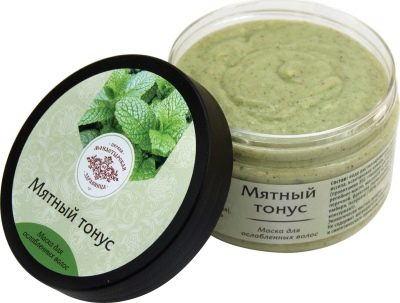
Mint and lemon balm have completely different effects on the body. When using lemon balm, you can solve such problems as:
-
nervous disorders;
-
depression;
-
stress and its consequences;
-
insomnia;
-
the presence of skin diseases;
-
diarrhea;
-
flatulence;
-
nausea.

When consuming mint, you can cope with such problems as:
-
the presence of inflammatory processes in the body;
-
hypertension;
-
fatigue;
-
severe apathy;
-
infections;
-
heartburn;
-
bloating;
-
the presence of cardiovascular problems.

Peppermint can relieve inflammation, swelling and spasm, and has a diuretic effect, which can help in certain situations.
The use of mint allows you to relieve inflammation inside the body and bring it into a working and active state., and lemon balm, on the contrary, calms and relaxes a person. The presence of a sufficient amount of vitamins in the composition allows the plant to have a beneficial effect on the heart, normalize metabolic processes, and improve the state of the nervous system. Melissa allows you to effectively care for your hair and scalp.
Both herbs can be used as teas, but do not drink too often or allergies may result.
Lemon balm mint can be eaten fresh or dried. For lemon balm, you need to use only the leaves and upper shoots, everything else will not bring the desired effect.
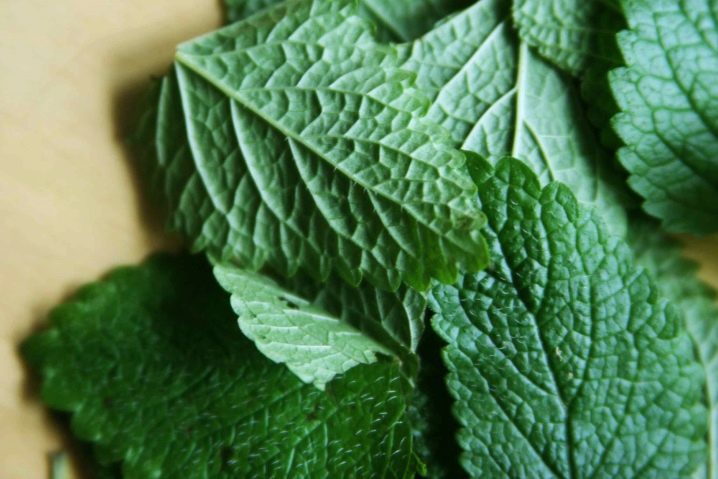
Features of growing plants
The comparison of mint with lemon balm can be continued by the methods of growing crops. Mint is a light-loving plant that grows well in the sun. The soil for it must be fertile, it will grow very badly on the sand. Watering the mint should be frequent and abundant; with proper care, the bushes grow well and delight with a lush green mass.
This plant propagates using seeds (rarely) or cuttings. In order for the bushes to have enough light, it is necessary to leave at least 30 cm of free space between them. For good growth, it is important to huddle the plant in a timely manner after watering. In the spring, it is necessary to add additives to the soil and prepare it for the upcoming season, then the mint will quickly grow.
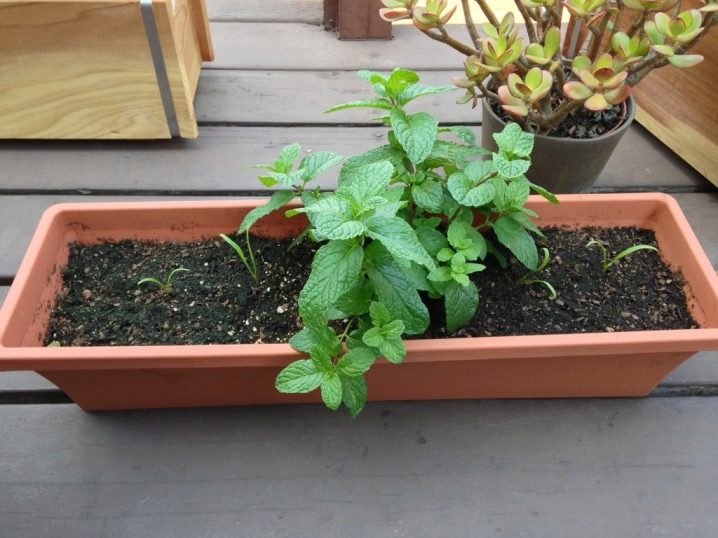
It is best to plant a culture using root cuttings, which are simply transplanted to a new place.
Melissa thrives in partial shade and can even grow on sandy soils. The optimal distance between the bushes will be a distance of 35-40 cm. There are several ways to propagate a plant:
-
dividing the bush and planting it in new places;
-
sow seeds and wait for shoots;
-
make a layer and separate it from the main plant, when the layers have formed their roots;
-
prepare cuttings and germinate them, planting them in open ground in the warm season.
This culture does well without water; infrequent watering in hot weather will be sufficient for it.
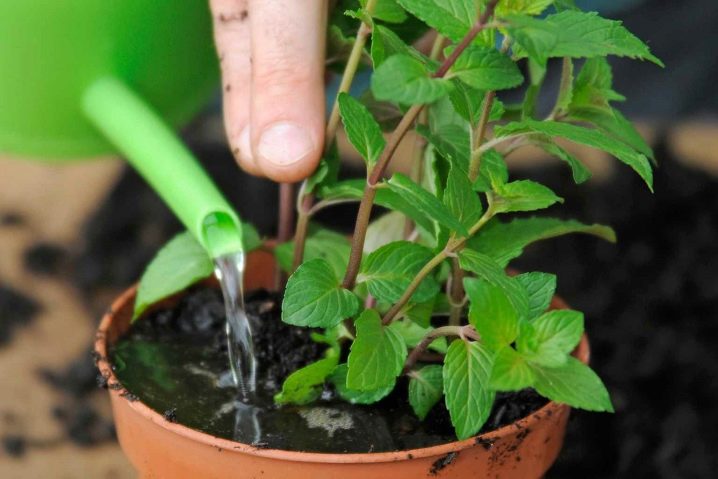
Mint and lemon balm can be grown both on the site and at home, in a flower pot.
When planting on the street, it is better to place both crops away from each other so that they do not pollinate, creating a kind of hybrid.
If the bushes grow nearby, the taste may suffer, and the grass will begin to taste bitter, which will not allow it to be used normally for cooking and drinks.

For growing at home, you should choose such varieties of mint as:
-
"Pearl";
-
"Fun";
-
"Ceremony";
-
"Kubanskaya".
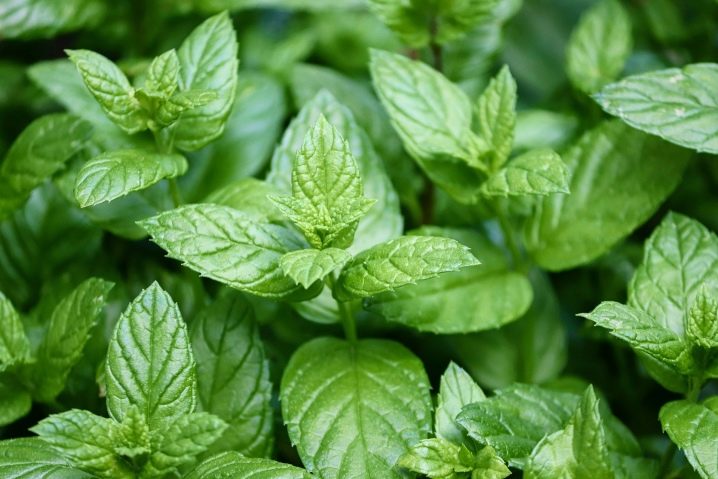
You need to plant seeds in the spring in order to get ready-made bushes by summer and collect the first crop from them. The window should be well lit by the sun, but direct rays should not hit the seedlings. The presence of light, heat and water will make it easy to grow mint in the home.
In addition to mint, you can also grow lemon balm at home. The most suitable varieties for this are:
-
Mojito;
-
"Pearl";
-
"Freshness";
-
"Pure gold" and others.
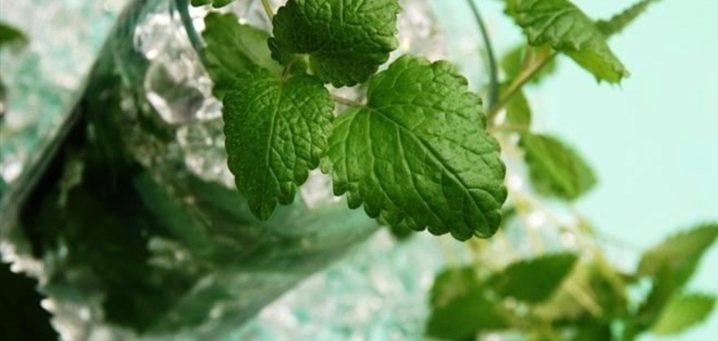
To grow lemon balm, you need to have a pot or other container, crop seeds, nutritious soil and a warm, lit place. In order for the bushes to grow thick, it is necessary to periodically pinch the top, stimulating the growth of lateral leaves. The bottom of the tank should be covered with drainage, on top of which a universal soil is placed. The optimum temperature for growing a crop is in the range of + 20 ... 25 ℃. Instead of watering, it is enough to spray the leaves several times a week, if it is hot in the room, then watering is carried out at the moment when the soil begins to dry out, it cannot be allowed to dry out.
Watering lemon balm is necessary with settled water at room temperature.
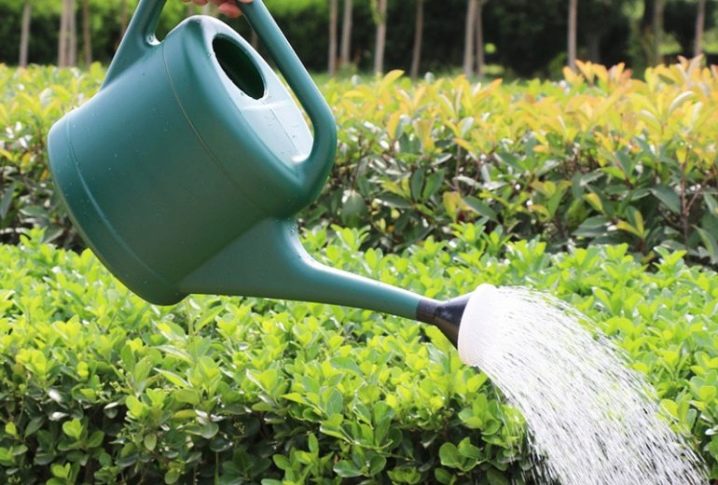
Melissa is a perennial plant, therefore, it is periodically necessary to make additional fertilizing in order to provide the soil with useful substances. If you take care of the culture correctly, it will look beautiful and magnificent, giving you the opportunity not only to admire yourself, but also serve as raw materials for the preparation of various dishes and drinks. If the care is improper, then the plant can be susceptible to attacks by pests or diseases.
It is not difficult to grow mint and lemon balm, the main thing is – know the main features of these plant species.
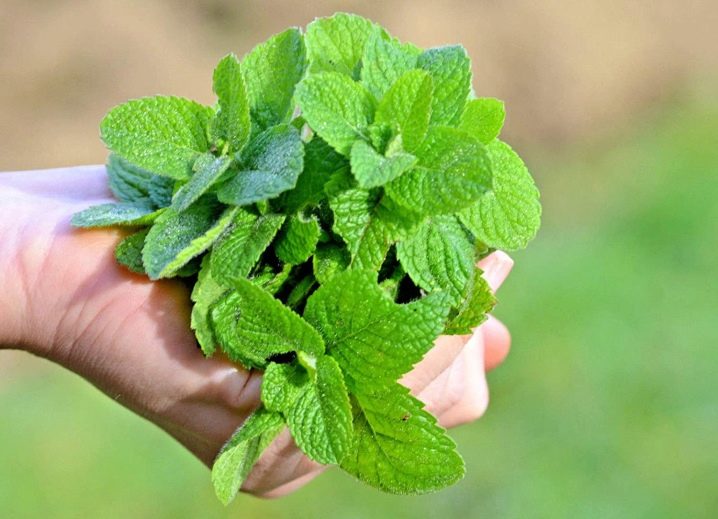













The comment was sent successfully.